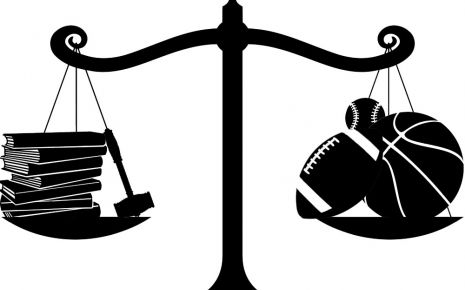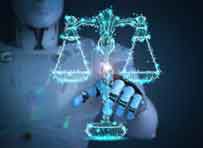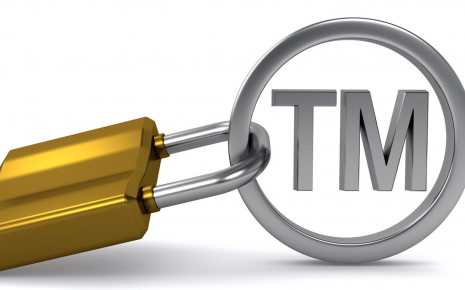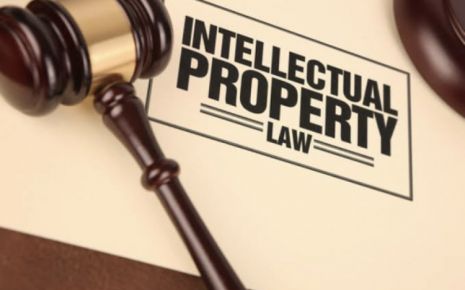Copyright Protection in the Digital Age: Challenges and Solutions
In the digital era, copyright protection has become a major concern for
content creators, publishers, and users alike. This article explores the
challenges of copyright protection in the digital age, including the ease of
reproduction and distribution, the difficulty in tracking, complex ownership,
and high cost of enforcement. It also presents measures to address these
challenges, including the use of digital rights management, watermarking,
copyright education, and legal action.
With the widespread availability of digital technologies, it has become easier than ever before to reproduce, distribute, and access copyrighted materials. However, this ease of access has also made it more difficult to enforce copyright laws and protect intellectual property rights. In this article, we will explore the challenges of copyright protection in the digital age and the measures that can be taken to address them.
Introduction:
The digital era has revolutionized the way we create, consume, and distribute content. With the rise of digital technologies such as the internet, social media, and mobile devices, it has become easier than ever to create and share digital content, including music, movies, images, and text. However, this digital landscape has also brought many challenges to copyright protection.
In the digital era, copyright protection has become a major concern for content creators, publishers, and users alike. The ease of reproduction and distribution of digital content has made it difficult to prevent piracy and copyright infringement. Additionally, tracking ownership and enforcing copyright laws can be a complex and costly process.
To address these challenges, solutions such as digital rights management, watermarking, copyright education, legal action, and international collaboration have been developed. These measures can help to protect the rights of copyright owners, deter piracy and copyright infringement, and promote responsible use of copyrighted materials.
However, the digital era continues to evolve, and new technologies such as artificial intelligence and blockchain are changing the way that content is created, distributed, and consumed. As such, it is important to continue to monitor emerging technologies and their impact on copyright protection, and to find a balance between access and protection. In this article, we will explore the challenges of copyright protection in the digital age and present solutions to address these challenges.
We will also discuss additional challenges such as international scope, fair use, user-generated content, emerging technologies, and balancing access and protection. Overall, copyright protection in the digital era presents a complex and evolving landscape, but with the right measures in place, it is possible to protect the rights of copyright owners and promote responsible use of copyrighted materials.
Key Terms and their meanings:
Conclusion:
In conclusion, the digital era has brought many challenges to copyright protection. However, it has also provided new tools and technologies to help content creators and publishers protect their rights. By implementing measures such as digital rights management, watermarking, and educating users on copyright laws, it is possible to address the challenges presented by the digital era.
It is important to continue to monitor emerging technologies and their impact on copyright protection, and to find a balance between access and protection. With the right measures in place, we can continue to promote creativity, innovation, and responsible use of copyrighted materials in the digital age.
With the widespread availability of digital technologies, it has become easier than ever before to reproduce, distribute, and access copyrighted materials. However, this ease of access has also made it more difficult to enforce copyright laws and protect intellectual property rights. In this article, we will explore the challenges of copyright protection in the digital age and the measures that can be taken to address them.
Introduction:
The digital era has revolutionized the way we create, consume, and distribute content. With the rise of digital technologies such as the internet, social media, and mobile devices, it has become easier than ever to create and share digital content, including music, movies, images, and text. However, this digital landscape has also brought many challenges to copyright protection.
In the digital era, copyright protection has become a major concern for content creators, publishers, and users alike. The ease of reproduction and distribution of digital content has made it difficult to prevent piracy and copyright infringement. Additionally, tracking ownership and enforcing copyright laws can be a complex and costly process.
To address these challenges, solutions such as digital rights management, watermarking, copyright education, legal action, and international collaboration have been developed. These measures can help to protect the rights of copyright owners, deter piracy and copyright infringement, and promote responsible use of copyrighted materials.
However, the digital era continues to evolve, and new technologies such as artificial intelligence and blockchain are changing the way that content is created, distributed, and consumed. As such, it is important to continue to monitor emerging technologies and their impact on copyright protection, and to find a balance between access and protection. In this article, we will explore the challenges of copyright protection in the digital age and present solutions to address these challenges.
We will also discuss additional challenges such as international scope, fair use, user-generated content, emerging technologies, and balancing access and protection. Overall, copyright protection in the digital era presents a complex and evolving landscape, but with the right measures in place, it is possible to protect the rights of copyright owners and promote responsible use of copyrighted materials.
Key Terms and their meanings:
- Copyright is a legal right granted to the creators of original works of
authorship, including literary, artistic, musical, and dramatic works, as
well as software, photographs, and other forms of creative expression.
Copyright law grants the copyright owner exclusive rights to control the
reproduction, distribution, and public display of their work, as well as the
right to create derivative works based on the original.
- The term "digital era" refers to the period of time in which digital technologies, such as computers, the internet, and mobile devices, have become ubiquitous and have significantly transformed the way we communicate, work, and live our lives
Challenges of Copyright Protection in the Digital Age:
The digital age has brought many challenges for copyright protection. Some of the key challenges include:
- Easy Reproduction and Distribution:
With the rise of digital technologies, it has become much easier to reproduce and distribute copyrighted materials. Digital copies of books, music, and movies can be made quickly and easily, and can be distributed around the world in a matter of seconds.
- Difficulty in Tracking:
In the digital age, it can be difficult to track the use of copyrighted materials. Once a digital copy is released online, it can be downloaded and shared countless times, making it almost impossible to know who is using the material and for what purpose.
- Complex Ownership:
In the digital age, ownership of copyrighted materials can be difficult to establish. With the ease of reproduction and distribution, it can be hard to determine who the original owner of a particular work is, or who has the right to distribute it.
- High Cost of Enforcement:
Enforcing copyright laws in the digital age can be a costly and time-consuming process. With so much content available online, it can be difficult to identify cases of copyright infringement and take legal action against those responsible
- International Scope:
In the digital age, content can be distributed globally, which can make it difficult to enforce copyright laws across different countries and legal systems.
- Fair Use:
The concept of fair use allows limited use of copyrighted materials without obtaining permission from the copyright owner. However, determining what constitutes fair use can be a complex and subjective process, which can make it difficult to enforce copyright laws.
- User-Generated Content:
With the rise of social media and other user-generated content platforms, it has become easier than ever for individuals to create and share their own content. However, this can also make it difficult to determine who owns the copyright to a particular work, and to enforce copyright laws.
- Emerging Technologies:
The digital age is constantly evolving, and new technologies such as artificial intelligence and blockchain are changing the way that content is created, distributed, and consumed. Keeping up with these emerging technologies and their potential impact on copyright protection can be a challenge.
- Balancing Access and Protection:
While copyright protection is important, it is also important to balance this protection with the need for access to information and creative expression. Finding the right balance between access and protection can be a challenge in the digital age.
Solutions:
- Digital Rights Management (DRM):
DRM is a technology that restricts access to digital content and prevents unauthorized copying and distribution. It can be used to protect copyrighted materials, such as music, movies, and eBooks, from piracy.
- Watermarking:
Watermarking is a process of embedding a unique identifier into digital content, such as images or videos. It can be used to track and identify the source of content and to deter unauthorized use.
- Copyright Education:
Educating users about copyright laws and the consequences of copyright infringement can help to reduce the incidence of piracy and encourage responsible use of copyrighted materials.
- International Collaboration:
Collaboration between governments, industry, and international organizations can help to develop and enforce consistent copyright laws across different countries and legal systems.
- Creative Commons Licensing:
Creative Commons is a non-profit organization that provides a range of free, standardized licenses that creators can use to grant permission for others to use their copyrighted materials. These licenses allow creators to retain ownership of their content while enabling others to use it in a variety of ways, depending on the terms of the license.
- Blockchain Technology:
Blockchain is a decentralized digital ledger that can be used to track ownership and usage of digital content. By using blockchain technology, copyright owners can create an immutable record of their ownership and control the distribution and usage of their content more effectively.
- Collaborative Content Protection:
Collaborative content protection involves bringing together a range of stakeholders, including content creators, publishers, technology providers, and legal experts, to develop and implement effective copyright protection strategies. By working together, these stakeholders can develop more comprehensive and effective solutions that address the challenges of copyright protection in the digital era.
- Fair Use Guidelines:
Fair use is a legal concept that allows for the limited use of copyrighted materials without permission from the copyright owner. However, the scope of fair use can be unclear and subjective, and it can vary depending on the jurisdiction and context. Developing clear and comprehensive fair use guidelines can help to promote responsible use of copyrighted materials while respecting the rights of copyright owners.
Legal Provisions:
- The Copyright Act, 1957:
The Copyright Act provides legal protection for original literary, artistic, and musical works, including digital content. The act outlines the rights and responsibilities of copyright owners, and provides legal remedies for copyright infringement.
- The Information Technology Act, 2000:
The IT Act is a comprehensive law that deals with a wide range of cyber-crimes, including copyright infringement. The act outlines penalties for various offenses related to digital content, such as hacking, piracy, and illegal file sharing.
- The Digital Millennium Copyright Act (DMCA):
Although the DMCA is a US law, it has been adopted by several countries, including India. The DMCA provides legal protection for digital content, and outlines procedures for filing copyright infringement complaints with internet service providers.
- The Indian Penal Code (IPC):
The IPC contains provisions related to copyright infringement, including penalties for offenses such as copying and distributing copyrighted materials without permission.
- The Copyright Rules, 2013:
The Copyright Rules provide guidelines for the registration, licensing, and enforcement of copyright in India. The rules outline procedures for registering copyrighted materials, as well as procedures for filing complaints and conducting legal proceedings related to copyright infringement.
Conclusion:
In conclusion, the digital era has brought many challenges to copyright protection. However, it has also provided new tools and technologies to help content creators and publishers protect their rights. By implementing measures such as digital rights management, watermarking, and educating users on copyright laws, it is possible to address the challenges presented by the digital era.
It is important to continue to monitor emerging technologies and their impact on copyright protection, and to find a balance between access and protection. With the right measures in place, we can continue to promote creativity, innovation, and responsible use of copyrighted materials in the digital age.
Law Article in India
Legal Question & Answers
Lawyers in India - Search By City
LawArticles
How To File For Mutual Divorce In Delhi

How To File For Mutual Divorce In Delhi Mutual Consent Divorce is the Simplest Way to Obtain a D...
Increased Age For Girls Marriage

It is hoped that the Prohibition of Child Marriage (Amendment) Bill, 2021, which intends to inc...
Facade of Social Media

One may very easily get absorbed in the lives of others as one scrolls through a Facebook news ...
Section 482 CrPc - Quashing Of FIR: Guid...

The Inherent power under Section 482 in The Code Of Criminal Procedure, 1973 (37th Chapter of t...
The Uniform Civil Code (UCC) in India: A...

The Uniform Civil Code (UCC) is a concept that proposes the unification of personal laws across...
Role Of Artificial Intelligence In Legal...

Artificial intelligence (AI) is revolutionizing various sectors of the economy, and the legal i...








Please Drop Your Comments